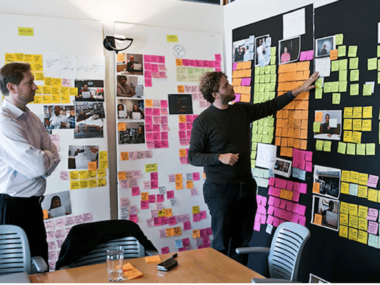In today’s fast-paced business environment, organizations must adapt and innovate to stay ahead of the curve and remain competitive. Leaders who can inspire their teams to think outside the box, take risks, and push boundaries will have an advantage.
To help leaders cultivate this culture of innovation, we’ve developed the TEAM coaching model, which stands for Talent, Engagement, Alignment, and Management. By leveraging the unique talents of each team member, fostering engagement and trust, aligning around a clear vision and goals, and managing progress and performance, leaders can build a team that thrives on innovation and consistently delivers exceptional results.
So, let’s dive deeper into each element of the TEAM coaching model.
T = TALENT
When team members feel that their unique talents are valued, they’re more likely to contribute ideas that can lead to breakthrough concepts and game-changing solutions.
As a leader, firstly, you need to gain a deeper understanding of the expertise, skills, and experience each person contributes to the team and identify any important gaps. Secondly, by better understanding the personality dynamics in your team, you can learn how to adapt your leadership style to bring the best out of everyone.
For example, when generating ideas, an introverted team member may prefer to work independently, while an extroverted team member may prefer to brainstorm and collaborate with others.
Coaching questions to ask:
- What are the unique talents that each of us brings to the team, and how can we leverage these?
- How does the diversity in our team contribute to our success?
- How can we create a culture of creativity in our team?

E = ENGAGEMENT
Team members who feel engaged are naturally more innovative because they feel empowered to share their ideas and collaborate without the fear of negative reprisals.
According to a Google study conducted in 2015, “psychological safety” was the most important factor in building a high-performing and innovative team. This refers to the belief that one can speak up and share their opinion without fear of retaliation or negative consequences.
As a leader, you need to consciously cultivate trust and harmony within your team so that each person feels safe to share their ideas freely. But that doesn’t mean you should shy away from conflict. Tension in teams is inevitable, and when you manage conflict in a constructive way, it can strengthen the team dynamic and lead to potential creative breakthroughs. Focus on finding common ground and then explore differences in perspective. There could be a brilliant solution lurking beneath the stormy waters!
Coaching questions to ask:
- How can we create a safe environment where people feel free to share their ideas?
- How can we ensure everyone feels included and valued in our team?
- What role can conflict play in making our team stronger?
A = ALIGNMENT
When teams are aligned around a common vision and strategy, they’re more effective in their innovation efforts because they understand how their contributions fit into the bigger picture.
As a leader, this alignment
starts with sharing a compelling vision that motivates and inspires your team
members, coupled with a clear strategy and roadmap. Involving your team in
shaping this can dramatically improve engagement and buy-in.
Additionally, it’s important to establish clear processes for decision-making and accountability, enabling your team to work collaboratively towards a common goal and adapt and realign as they evolve.
Coaching questions to ask:
- What is our shared vision and purpose as a team?
- How does our team add value to the organization?
- How can we ensure every team member is working toward the same goals?

M = MANAGEMENT
Measuring, managing, and tracking progress is a crucial ingredient of a highly innovative team. As a leader, not only does this ensure that new ideas and solutions are successfully implemented, but you also encourage team members to learn, grow, and develop essential skills needed to consistently deliver excellent results.
Firstly, it’s important to establish innovation goals that are specific, measurable, achievable, relevant, and time-bound (SMART) and that align with the team’s overall strategy and vision. And secondly, by regularly coaching your team members to achieve these goals, you help them to identify their strengths and weaknesses, set priorities, and develop new skills.
Coaching questions to ask:
- What are our key measures of success as a team, and how can we track them?
- What are our top three priorities as a team over the next 90 days?
- What resources do we need to deliver our quarterly goals and objectives?
In today’s fast-evolving environment, innovation is crucial for organizations that want to stay ahead of the curve. Leaders who inspire their teams to think creatively and challenge the status quo will have an advantage. By using the TEAM coaching model as a framework, leaders can better tap into the collective potential of their team to deliver innovative ideas that revolutionize and create long-term value.
Article written by Gabriella Goddard, Founder of the brainsparker app, and an Executive Coach specializing in leading innovation. Follow her on LinkedIn.
NOTE:
This is the hyperlink to download the TEAM coaching model: https://brainsparker.com/wp-content/uploads/workouts/TEAM-innovation-infographic.pdf











